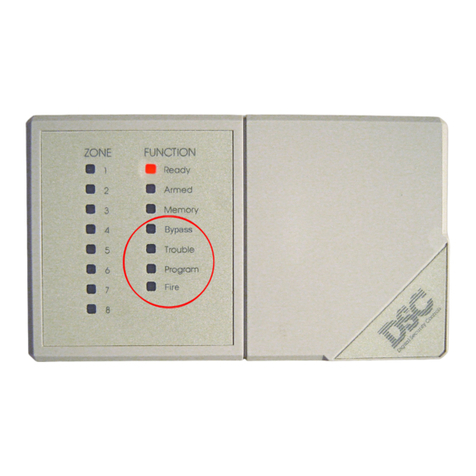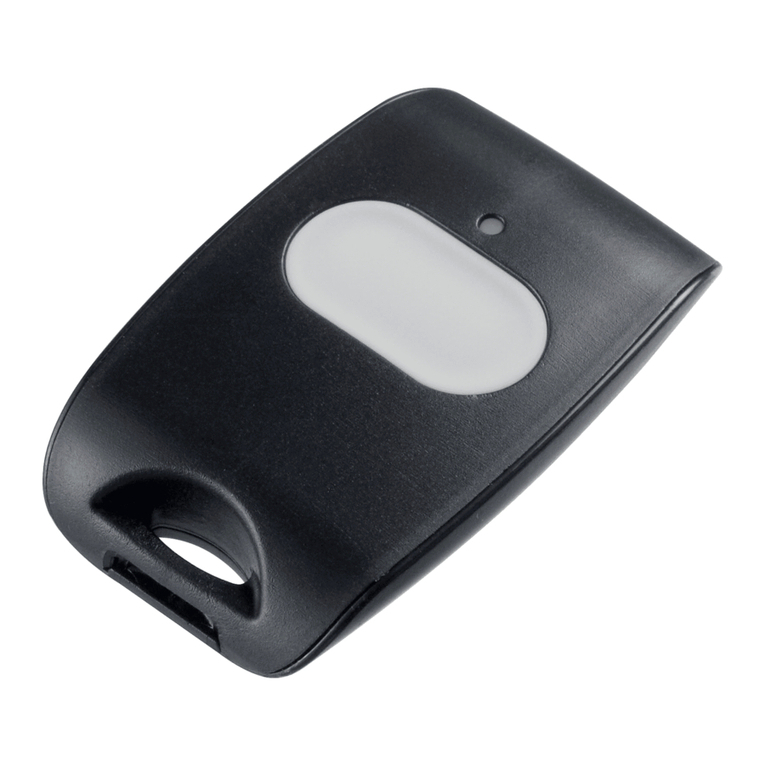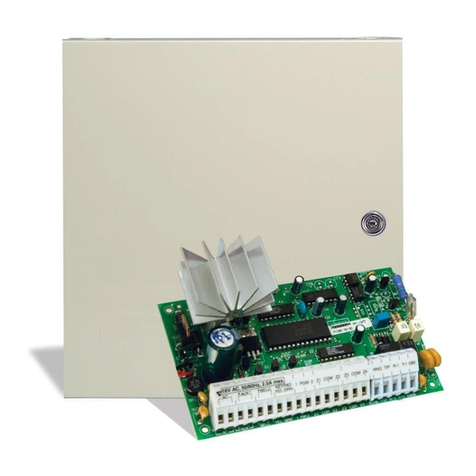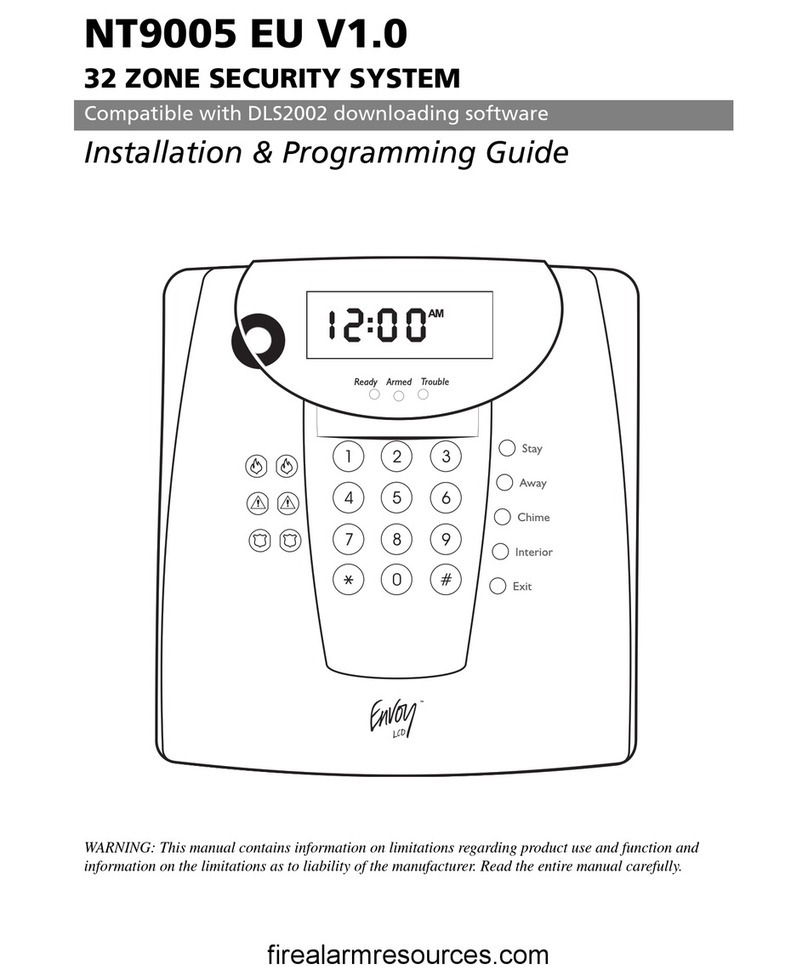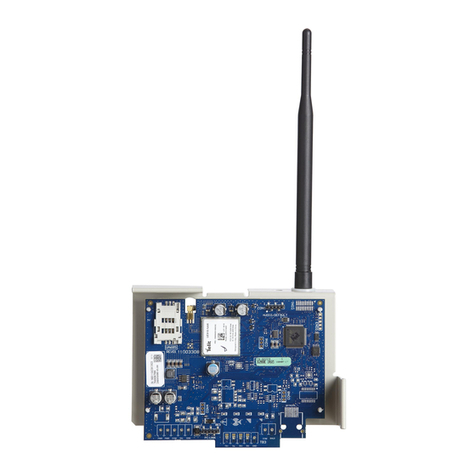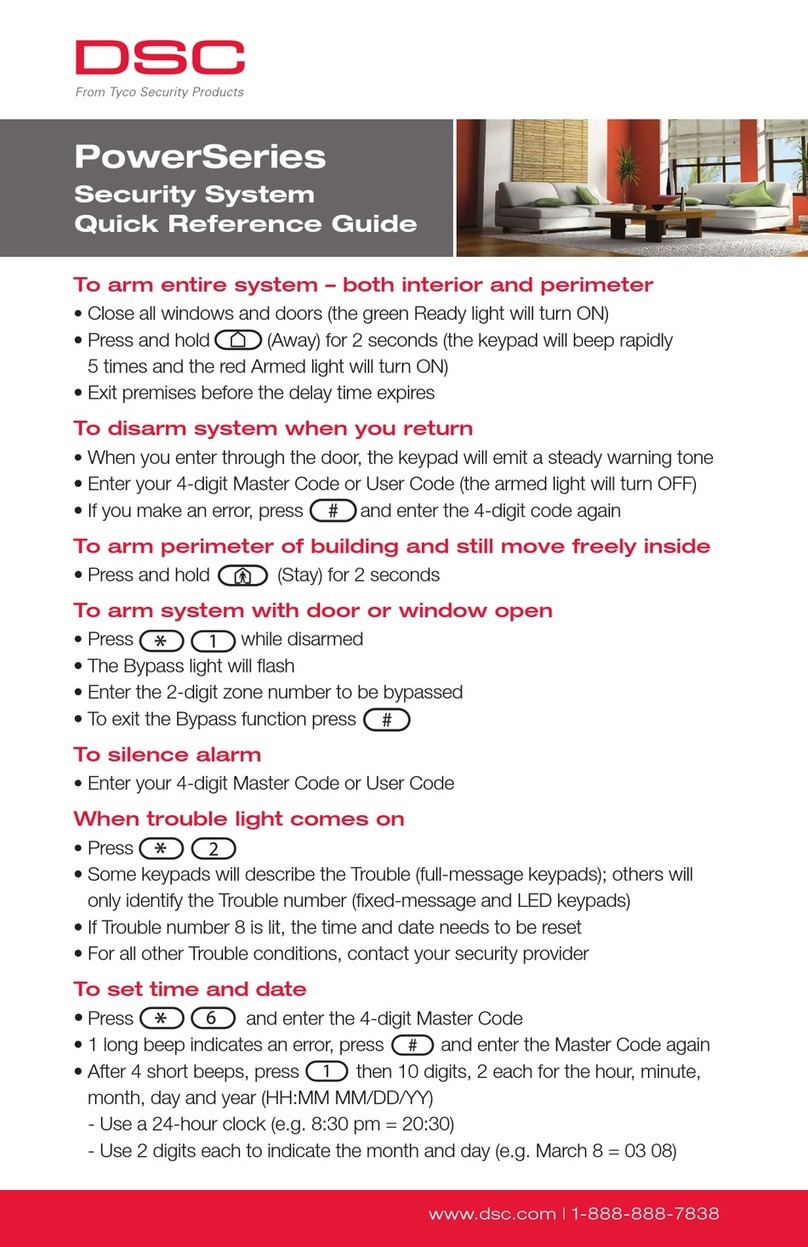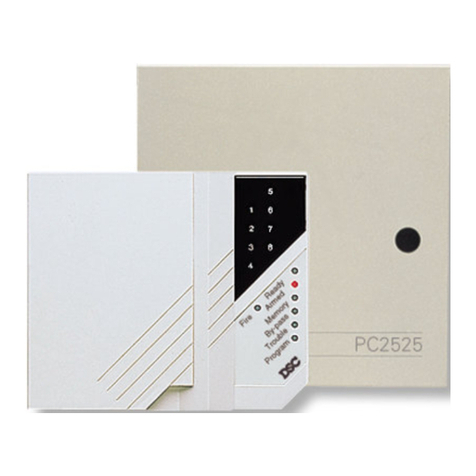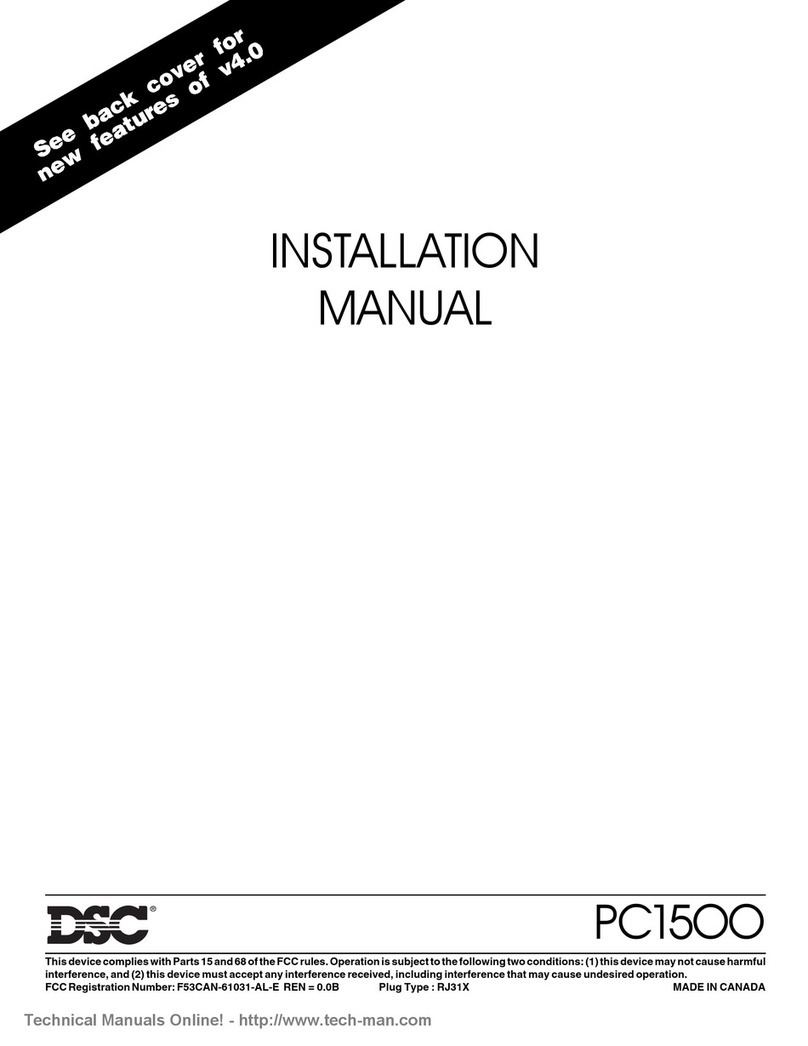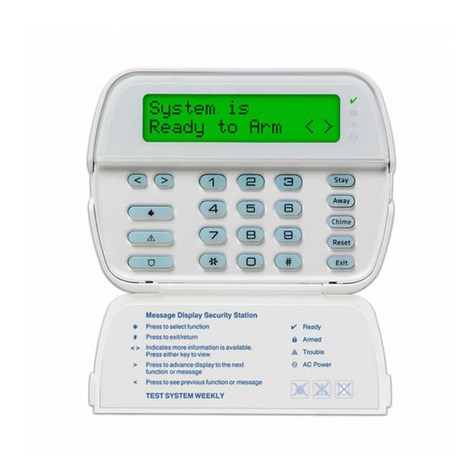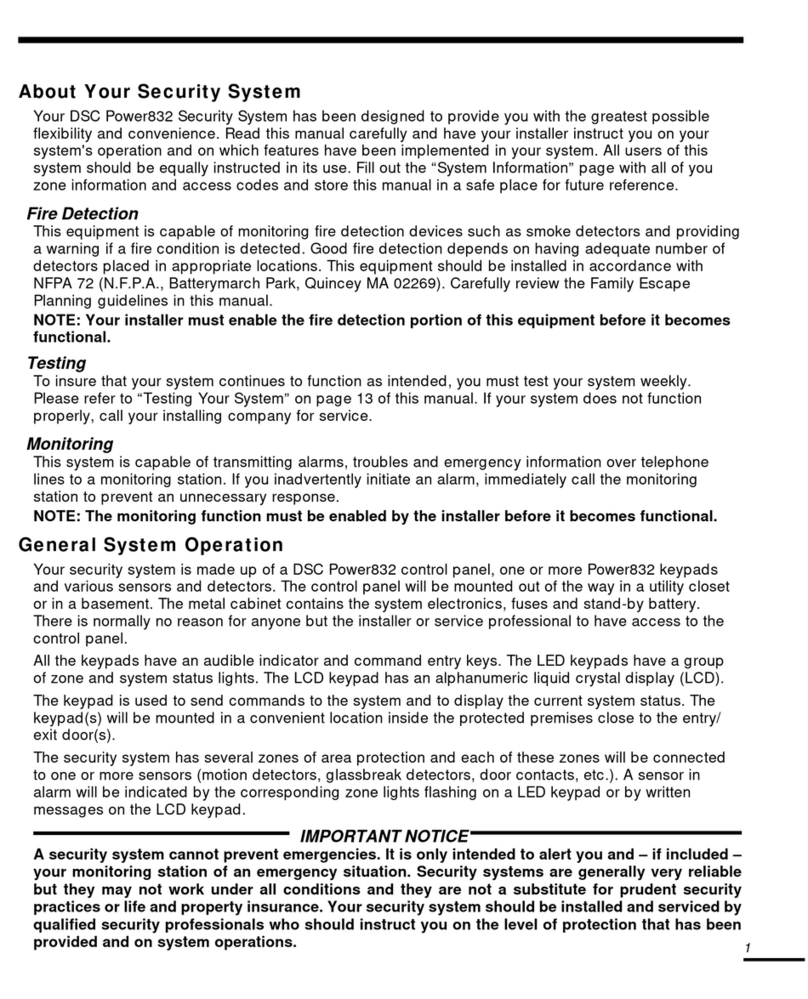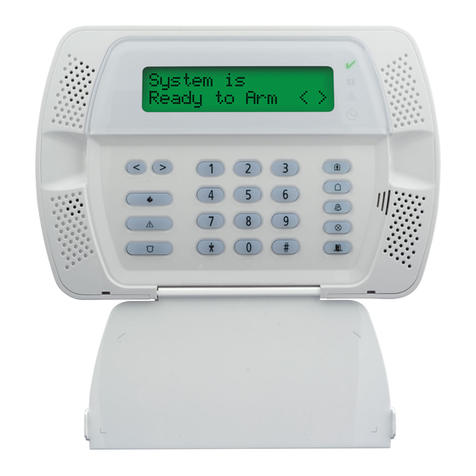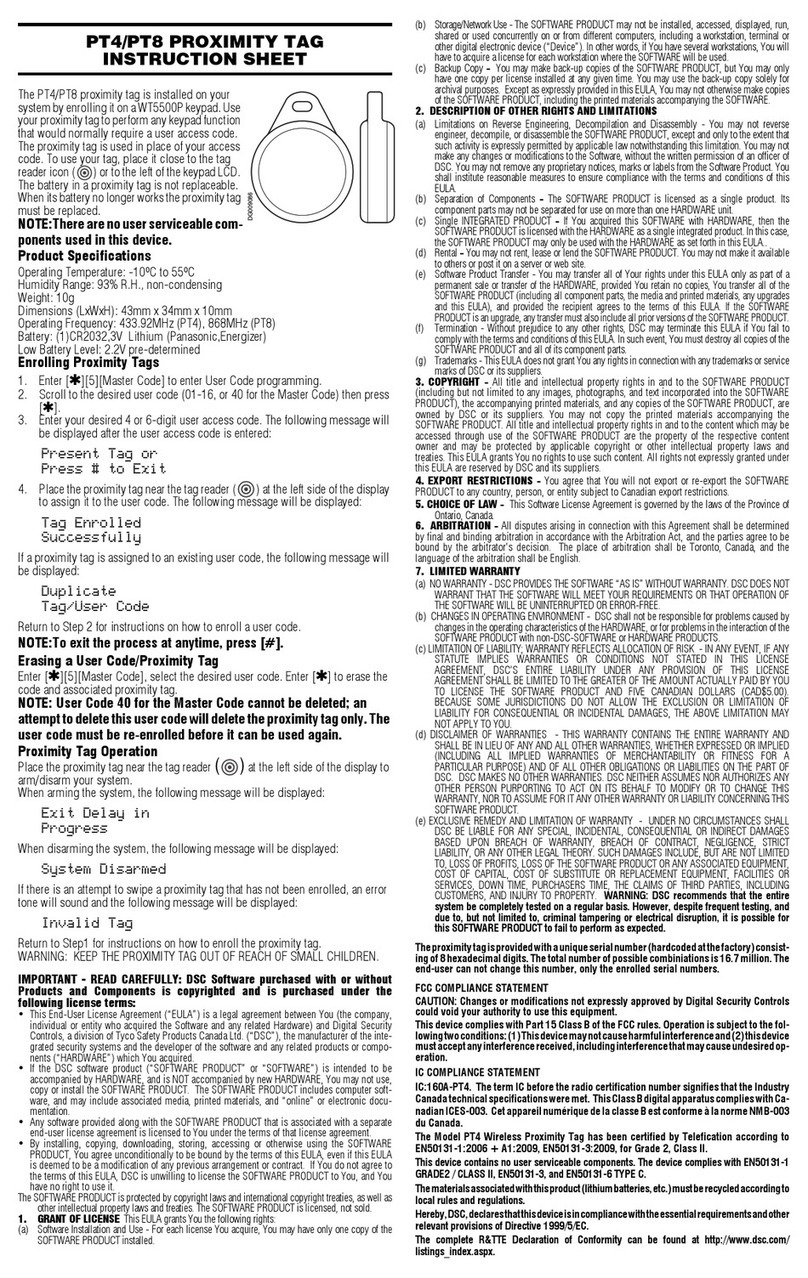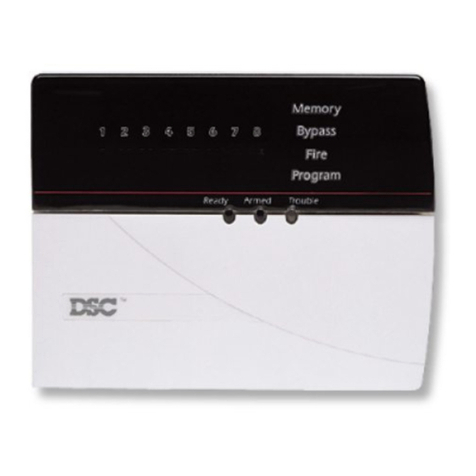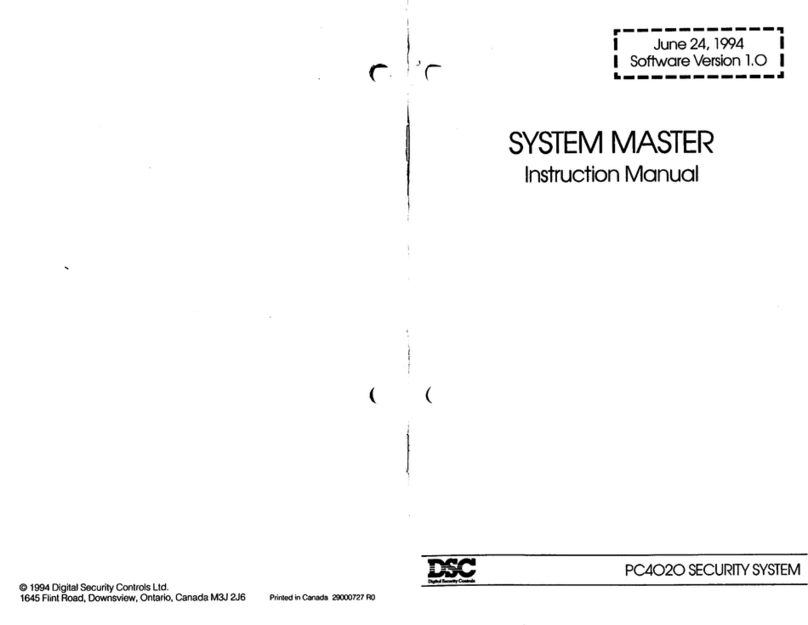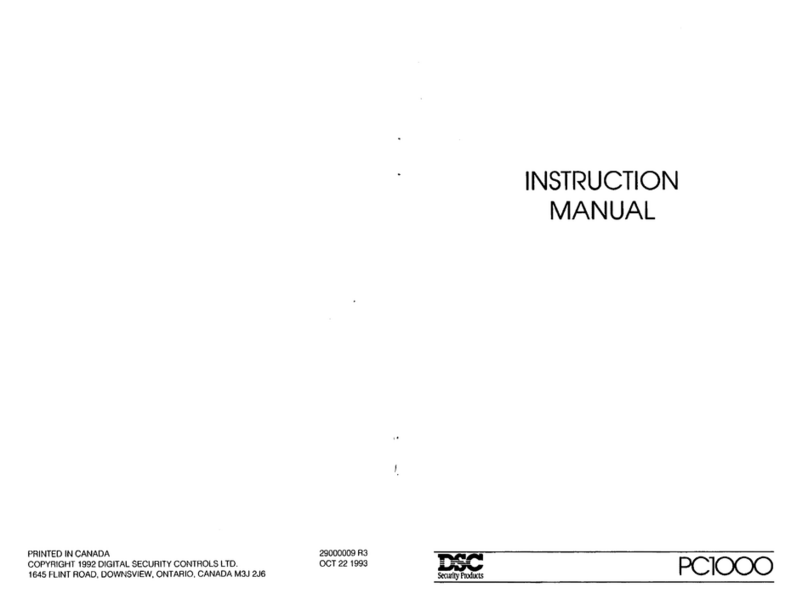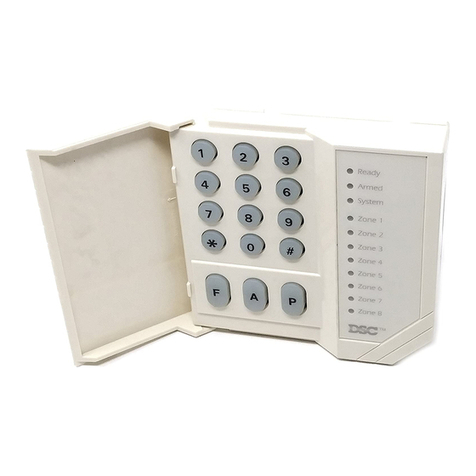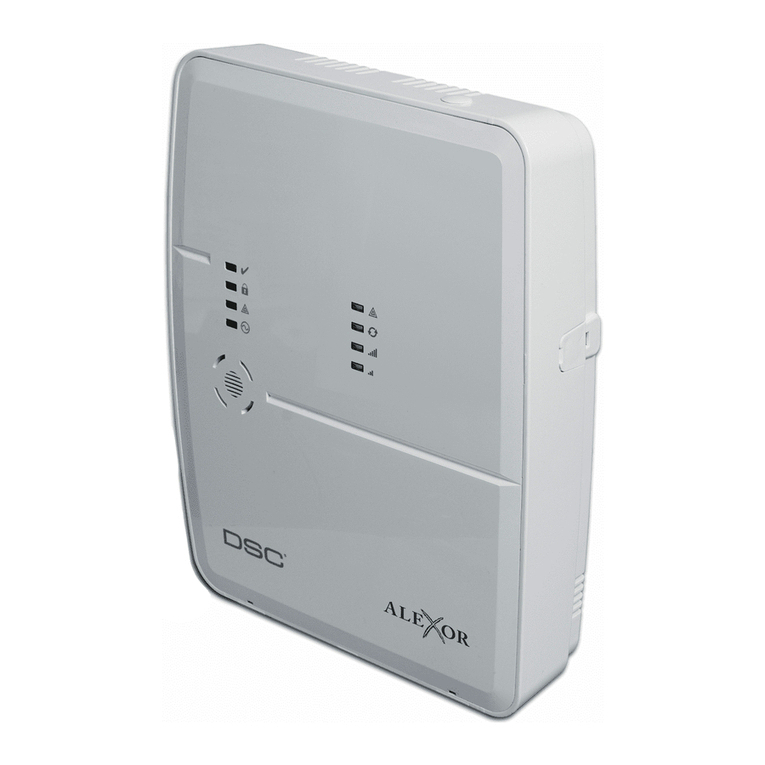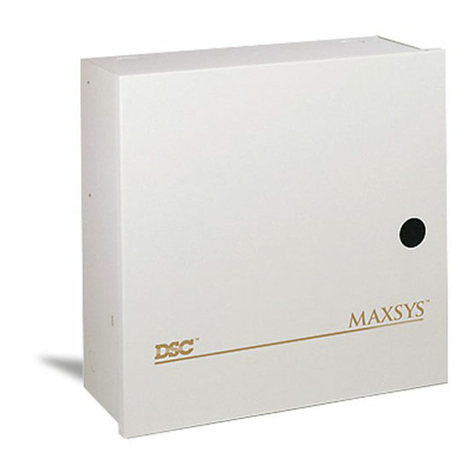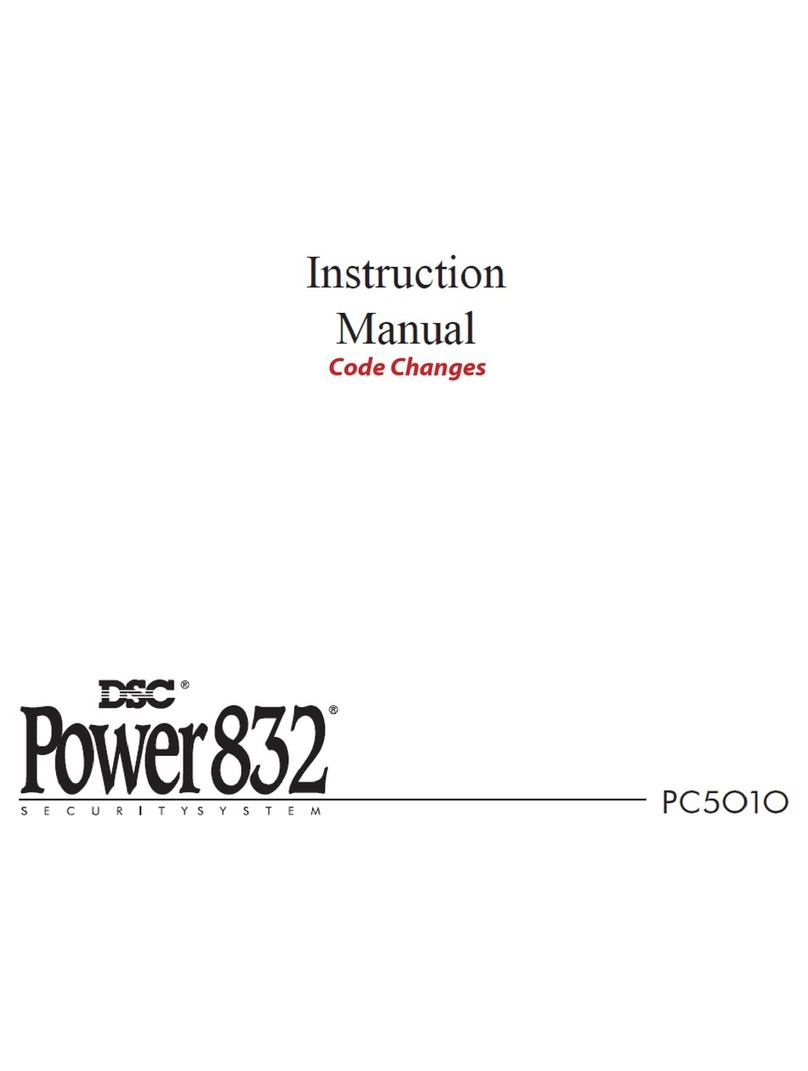
MASTER CODE
The 4 digit Master Code is used to arm and disarm the security system, to
program additional security codes and to change other system features. The
Master Code will be supplied to you by your installer. All keypad entries are
made by pressing one key at a time. (See Additional Codes section)
ARMING THE SYSTEM
Check the following items before arming the system:
Bypass light
If the “Bypass”light is ON, insure that zones are intentionally bypassed before
arming the system (See Zone Bypassing section).
Trouble light
If the “Trouble”light is ON, check to see what the trouble condition is and call
for service. (See Viewing Trouble Conditions section).
Ready light
If the “Ready”light is NOT ON, check to see that all doors and windows are
closed and that motion is stopped in areas covered by motion detectors. The
system cannot be armed unless the “Ready”light is ON indicating that all
zones are closed.
NOTE:
The system may be armed with a zone bypassed or a trouble present
but your security protection will be reduced.
To Arm
Enter your 4 digit access code. As each digit is entered, the keypad sounder will
beep. If the correct access code is entered, the keypad sounder will beep
quickly and the “Armed”light will come ON.
If the access code was entered incorrectly or the “Ready”light comes ON, the
keypad buzzer will sound steadily for 2 seconds. If this occurs, press the [#] key
and re-enter your access code.
When the correct access code is entered and the “Armed”light comes ON, exit
the premises through the door indicated by your installer as the Exit-Entry door.
At the end of the exit delay period, all lights, except the “Armed”light, will go out
and the system will be armed. The exit time delay can be changed by your
installer.
AUTO-BYPASS OPTION - HOME-AWAY ARMING
This feature, if selected by your installer, will allow you to arm your system with any
valid access code and the system will automatically bypass the interior zones. The
“Bypass”light will come on. If you exit within the allowed exit time, the system will
automatically activate the interior zones and the “Bypass”light will go out. This
feature is designed to save the customer from having to manually bypass interior
zones each time they wish to arm the system and remain at home.
In residential applications where the system has been armed and the interior
zones are automatically bypassed, the interior zones can be reactivated from a
keypad that is outside the interior zone's protection area. To reactivate the interior
zones, press [∗] then [1] and the “Bypass”light will go out.
[P] Panic
Holding this key down for two seconds causes a steady tone on your siren or
bell if your installer has programmed this key for audible operation. An auxiliary
warning device is also activated if your installer has connected it to your
system. Enter a valid access code to silence the alarm.
FIRE ALARM OPERATIONS
Alarm
On a fire alarm, the bell/siren will sound pulsing. The digital communicator
transmission is delayed for 30 seconds. If the alarm is not acknowledged
within the 30 second delay, the communicator will transmit the fire alarm to the
monitoring station.
Silence
To silence the bell/siren, press the [#] key. If the alarm is silenced and the
smoke detector is not reset, the alarm will resound after 90 seconds.
Reset
To restore the smoke detector(s) to normal, press [∗][7]. If the detector still
has smoke in it, the alarm will resound and the sequence described above will
repeat. If the detector is clear of smoke, the system will return to normal.
NOTE:
If you suspect that the communicator has transmitted and there is
no fire condition, call the monitoring station to avoid an
unnecessary response. If a fire condition is apparent, follow your
evacuation plan immediately. If the alarm sounds at night,
evacuate immediately.
TESTING YOUR SYSTEM
It is recommended that you test your system weekly. Perform system
tests in the off-peak hours, such as early morning or late evening.
1. Inform the monitoring station that you are testing your system.
2. Disarm the system (“Ready”light ON).
3. Perform a bell/battery test by pressing [∗][6][Master Code]. The signal will
sound for about 2 seconds. If a trouble occurs after the test, press [∗][2] to
view the trouble condition.
4. Activate each sensor in turn (e.g. open a door/window or walk in motion
detector areas). Observe the zone light come ON when the zone is
activated. The zone light will go OFF when the system restores to normal
(i.e. door or window closed).
5. If they are programmed for operation, press the [F], [A], and [P] keys in
turn. The [F] key will sound the bell/siren in a pulsed mode. Enter the access
code to silence the alarm. The [A] key is silent. The [P] key may be
programmed as silent or audible. If the alarm sounds, enter the access
code to silence.
6. If the panel has a zone programmed for fire, activation will cause the alarm
signal to sound in a pulsed mode. CAUTION:
Do not use an open flame
or burn materials to test a smoke detector.
Contact your alarm installer
for information on safe methods to activate a smoke detector.
7. Should the system fail to operate properly, call your alarm dealer for service.
310
